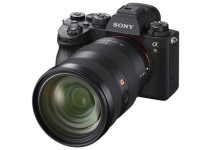If you’re planning on adding a new mirrorless camera to your holiday wishlist, odds are you want to pick one that will give you not only the best bang for your buck but also the best image quality right off the bat. With that in mind and while taking into account all the cameras released in 2018, the Blackmagic Pocket Cinema Camera 4K and Fujifilm XT-3 seem to be more than a value-oriented investment, both delivering fantastic image quality for a relatively affordable price.
Given that the two cameras have received equally positive reviews from users thus far, it can be tricky to determine whether to stand behind Blackmagic or Fujifilm’s offering. Therefore, the video produced by Jsfilmz below compares the two rivals head-to-head thus helping you decide which camera you should get during the coming holiday season.
The first comparison made by Jsfilmz aims to show the differences between the two cameras in terms of low-light performance. Based on this particular test, the footage from the X-T3 seems more than usable, even at ISO 3200. On the other hand, if you require the cleanest images possible, and if you don’t mind spending some time in post, then the BMPCC 4K might be the better fit for you.
On the topic of image quality, the suggested video also compares the two cameras in regards to dynamic range – specifically highlight recovery. After bringing two overexposed shots from each camera into DaVinci Resolve, it becomes clear that the BMPCC 4K with its 13 stops of dynamic range and RAW shooting capabilities, was able to recover highlights better than the X-T3.
Nonetheless, even without any of the RAW format functionalities included with the BMPCC 4K, the X-T3 still managed to retain an adequate amount of details in the highlight area revealing the wisps of clouds in the midst of an overcast day as seen in the example below.
As far as codecs go, the BMPCC 4K packs more robust recording options that its competitor such as CinemaDNG Raw/Raw 3:1/Raw 4:1, and various ProRes 422 options. This functionality allows for better image quality with fewer compression artifacts, in addition to greater control over the footage when shooting and editing RAW in post.
Meanwhile, the X-T3 offers more than adequate array of video capabilities, including internal UHD 4K60p video recording at 4:2:0 10-bit, as well as 4K60p 4:2:2 10-bit via HDMI output, both at up to 400 Mb/s using either MPEG-4 AVC/H.264 or HEVC/H.265 compressions. As a side note, simultaneous external and internal recording is also possible.
While the X-T3 may have its codec limitations, the camera’s smaller and less taxing file sizes allow video shooters to spend less on storage media, letting them use affordable SD cards for internal recording. In contrast, utilizing the BMPCC 4K requires a more serious investment in several expensive CFAST cards to handle the larger files.
The X-T3 also wins in terms of portability as it looks more inconspicuous than Blackmagic’s offering which is an essential prerequisite for run-and-gun situations when staying under the radar while shooting is a must.
Moving further on into the comparison, it’s no surprise that the X-T3 outperforms the BMPCC 4K when it comes to battery life. This conclusion can be made mainly due to the fact that the Pocket 4K takes up generally more power when shooting in RAW, thereby decreasing its battery life at a significantly faster rate.
Nevertheless, when comparing the usability of each camera, it’s safe to say that the BMPCC 4K reigns supreme. Thanks to the large 5-inch touchscreen display and excellent software implementations, filmmakers can have a pleasant time navigating the BMPCC 4K’s elegantly designed menus, in addition to evaluating their shot composition and framing comfortably even in harsh light.
Last but not least, the BMPCC 4K comes out cheaper at $1,295 for the body only, whereas the X-T3 currently sells for $1,499. Overall, the video concludes that the BMPCC 4K argumentatively offers the greatest price-to-performance ratio, while packing a plethora of professional features at a surprisingly affordable price tag. Of course, this doesn’t necessarily mean that the XT-3 provides less value for the money, especially when you consider its high-speed performance, more-than-capable imaging, and multimedia flexibility.
[source: JSFILMZ]
Order Links:
Blackmagic Design Pocket Cinema Camera 4K (B&H, Amazon)
Fujifilm X-T3 Mirrorless Digital Camera (Body Only, Black) (B&H, Amazon)
Disclaimer: As an Amazon Associate partner and participant in B&H and Adorama Affiliate programmes, we earn a small comission from each purchase made through the affiliate links listed above at no additional cost to you.



